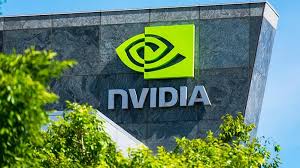Nvidia's Executive Stock Sales and Market Position: A Quantitative Analysis

Executive Summary
In the public discourse surrounding Nvidia, a schism has formed between two competing narratives. On one side, financial media outlets have amplified a story of significant insider stock sales, often employing pejorative language that suggests a lack of executive confidence. On the other, financial analysts and technology strategists point to overwhelming evidence of market dominance and future growth. This polarized environment, charged with emotional rhetoric, obscures a more clinical reality. This analysis will set aside the speculative commentary to conduct a dispassionate examination of the available data, including SEC regulations, historical precedents in corporate finance, and key performance indicators that define Nvidia’s current market position.
Deconstructing Executive Share Sales: The Mechanics of SEC Rule 10b5-1
A primary point of concern, amplified by reports in outlets such as CNBC and Yahoo Finance, centers on over $1 billion in stock sold by Nvidia insiders. The term frequently used—'dumped'—implies a sudden, panicked exit. However, an analysis of the mechanism behind these sales reveals a starkly different picture rooted in regulatory compliance and standard financial planning.
These transactions are overwhelmingly executed under SEC Rule 10b5-1. Enacted in 2000, this rule provides a crucial affirmative defense against accusations of insider trading. It allows company insiders—executives and directors—to establish a pre-arranged, automated trading plan at a time when they are not in possession of material non-public information. These plans specify future transactions based on a predetermined schedule, price trigger, or formula.
For executives at high-growth companies like Nvidia, whose compensation is heavily weighted in equity, 10b5-1 plans are not a sign of distress but a tool for prudent asset diversification and liquidity. The alternative—attempting to sell shares in narrow, permissible trading windows—is logistically complex and carries a higher risk of being perceived as trading on inside knowledge. The sales in question, therefore, are not reactive decisions based on a dim view of the company's future, but the systematic execution of long-established financial plans. To frame these scheduled, automated liquidations as a 'dump' is a categorical misrepresentation of their nature and intent.
Furthermore, it is critical to contextualize the dollar amount. While '$1 billion' is a headline-grabbing figure, it represents a minute fraction of the total insider holdings and the company's multi-trillion-dollar market capitalization. Statistical analysis of insider filings for peer companies in the technology sector reveals that such sales are a common and expected feature of executive compensation cycles during periods of substantial stock appreciation.
The 'Challenger' Hypothesis: A Quantitative Look at Nvidia's Strategic Moat
The second major counter-narrative posits the rise of a credible challenger that will dilute Nvidia's market dominance. A recent prominent example is the prediction from SoftBank's Masayoshi Son that OpenAI will ultimately surpass Nvidia as the world's most valuable company. While such predictions generate discussion, they must be weighed against the current, quantifiable data that defines Nvidia's competitive advantage.
Nvidia’s dominance is not merely a function of its current-generation hardware; it is an outcome of a deeply entrenched, multi-decade strategic ecosystem. The core of this moat is CUDA (Compute Unified Device Architecture), a proprietary parallel computing platform and programming model. With over four million registered developers and a vast library of applications and research built upon it, CUDA creates significant switching costs for enterprise and research clients. A competitor would need to not only produce superior hardware but also replicate this mature, complex, and widely adopted software ecosystem—a monumental undertaking.
This ecosystem advantage is evidenced by strategic partnerships. The recently announced collaboration with Hewlett Packard Enterprise (HPE) to deliver 'Nvidia AI Computing by HPE' is not merely a sales channel; it is a deep integration into the enterprise IT infrastructure, reinforcing Nvidia's position as the foundational platform for corporate AI adoption. Contrast a prediction about a future challenger with the tangible reality of Nvidia's accelerating integration into the global enterprise market.
Forward-Looking Indicators: Financial Models and R&D Momentum
Beyond its current defensive moat, forward-looking indicators suggest sustained momentum. While media reports focus on stock sales, financial analysts who model the company's growth trajectory are presenting a profoundly bullish case. Coverage by outlets like The Motley Fool highlights a projection from a prominent Wall Street analyst that Nvidia could reach a $6 trillion market capitalization. Such a forecast is not based on sentiment but on quantitative models factoring in total addressable market (TAM) expansion, continued data center growth, and sustained high-margin revenue.
This financial optimism is underpinned by a robust product pipeline. Persistent industry reports and supply chain analysis point towards the imminent arrival of a next-generation GPU architecture, rumored to be the RTX 50-series. This indicates that Nvidia is not resting on its current success but is continuing its aggressive cadence of innovation. In the technology sector, R&D velocity is a primary leading indicator of future market share, and Nvidia's demonstrated pace outstrips that of its competitors.
Conclusion: An Evidence-Based Interpretation
When stripped of emotionally charged language and speculative predictions, the data presents a coherent picture.
- Insider stock sales are consistent with regulated, pre-scheduled financial planning common among executives in high-growth technology firms and do not statistically correlate with a lack of internal confidence.
- Nvidia's market position is protected by a significant and growing competitive moat, primarily its CUDA software ecosystem, which presents high barriers to entry for potential challengers.
- Forward-looking indicators, including quantitative analyst models and a robust R&D pipeline, suggest that the company's growth trajectory is likely to be sustained.
Ultimately, a data-driven analysis concludes that the narrative of a company whose leadership is losing faith is a misinterpretation of standard corporate governance. The evidence points instead to a strategically dominant organization executing a long-term plan, with executive financial activity operating in a predictable, regulated, and rational manner.

